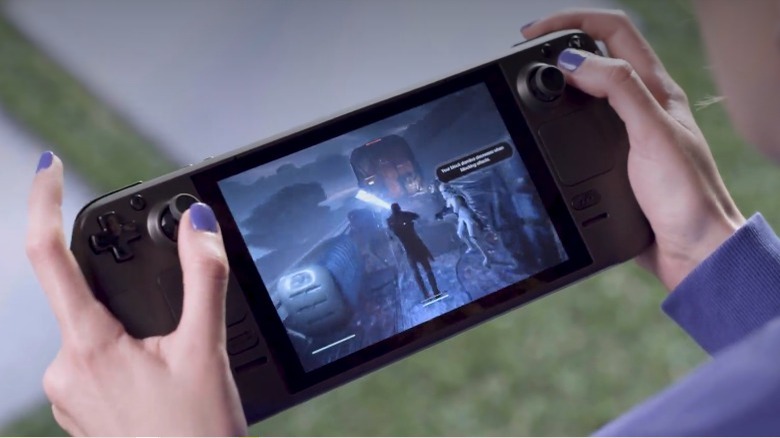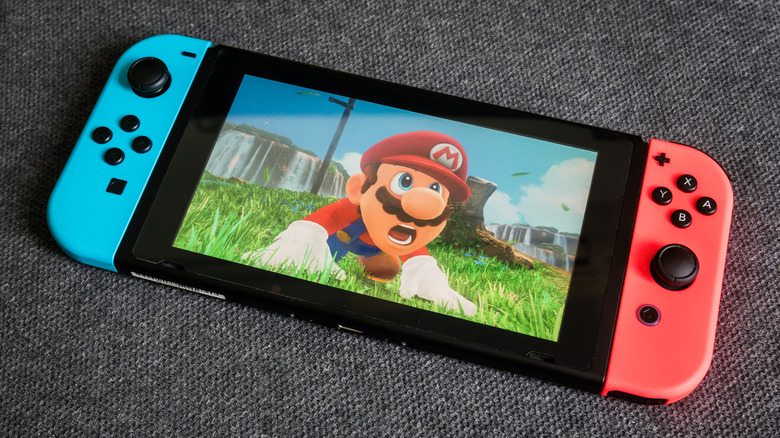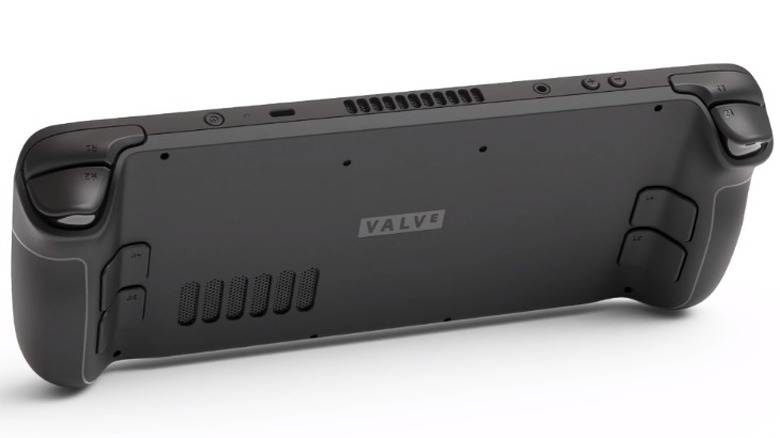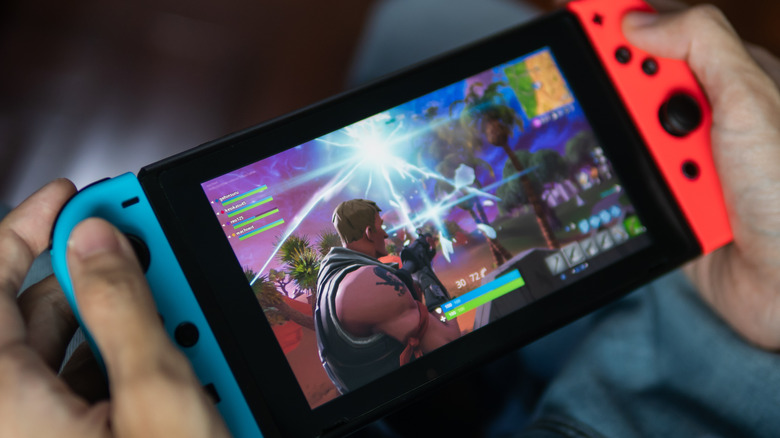Steam Deck Vs Nintendo Switch: Which Is Better?
Nintendo has always had almost all control over the portable gaming market. While there have been systems that have come up to challenge it over time — like the PlayStation Portable, for instance — nothing has ever really taken the gold away from Nintendo handheld consoles.
However, Valve might be looking to change that. The Steam Deck, which was announced on July 15, 2021, will be a way for Steam users to take their library on the go. The Steam Deck, which is set to release sometime in December 2021, had been hinted at in the past months, and the official announcement has been met with substantial enthusiasm.
This will, without a doubt, open up a ton of possibilities for the handheld gaming market. As it stands, Nintendo is still dominating with the Nintendo Switch. Whether the Deck can achieve some kind of market penetration is the open question. The Nintendo Switch OLED Model is releasing on October 8, 2021, and people are trying to figure out which handheld system is better. Here's our take.
Cost
The Steam Deck is going to be released at three different price points based on the amount of storage and the type of hard drive included. The cheapest model is $399, then $529 for upgraded storage and an SSD, and then $649 for even more storage. The Nintendo Switch OLED Model will have one price point: $349. This includes 64GB of storage, so it's most comparable to the cheapest Steam Deck option.
However, it's also worth comparing to the other Nintendo Switches, since the OLED Model is only bringing quality-of-life changes to the console line. The regular Nintendo Switch is $299, and the Nintendo Switch Lite is $199.
At those prices, it's clear that Nintendo wins when it comes to price. The highest-end Nintendo Switch is almost half the price of the highest-end Steam Deck. While there may be some justification for this in terms of hardware, they're coming into the market at a pretty high price point.
Games
Comparing the games between the Nintendo Switch and the Steam Deck almost feels unfair. Steam is easily one of the biggest PC stores, if not the biggest store. According to PC Games, Steam passed 50,000 games available as of February 2021, and it's only continuing to grow. There shouldn't be an issue of which games are available, either. The website for the Deck says that it "runs the latest AAA games — and runs them well." The site also says that it's "Steam, without compromises," which sounds like the system should be able to run the entire Steam library.
However, there are already some issues people are discussing about games with anti-cheat software like "Apex Legends" or "Player Unknown's Battlegrounds." As of right now, it's not clear whether these will be resolved before the release of the Deck. On the Nintendo Switch OLED Model page, Nintendo advertises that the system has "more than 5,000 games ... and counting." While that's an impressive library, it's only a tenth of what the Steam library could include.
The Steam Deck comes out on top in the games area. Sorry, Nintendo. It's hard to top Steam's massive library.
Hardware
Since the Steam Deck hasn't been released at the time of this writing, it's a bit hard to compare performance. No one knows how it really performs. Instead, it makes more sense to compare the technology on the inside of the systems to see how everything breaks down.
Unfortunately, Nintendo's pretty secretive about what hardware they use. For example, the processor for the Switch is simply called a custom NVIDIA Tegra processor. There's no actual information about its specs. In a breakdown from I Fix It, it was discovered that the Switch has 4GB of RAM. Comparably, the Steam Deck has 16GB of RAM. This is a pretty big difference when it comes to what developers can create. However, there's no word on if the RAM has been updated for the Nintendo Switch OLED Model.
The Steam Deck has three different storage options: 64GB, 256GB, and 512GB. The Nintendo Switch OLED Model has 64GB of storage, and both the Nintendo Switch and the Switch Lite have 32GB.
The Steam Deck comes out on top in the long run with hardware. That's to be expected, considering the system is trying to run all the PC games from the Steam library. It's actually trying to be a mini computer.
Battery Life
Since both systems are portable, it makes sense to figure out how long they'll each last on the road. Keep in mind that games have a huge impact on how much a battery drains. For that reason, both Nintendo and Valve have pretty wide ranges of battery life. The bigger and more demanding the game, like "The Legend of Zelda: Breath of the Wild" for Switch, the quicker your battery is going to drain. This applies to any handheld device, including your cell phone.
The battery life of the Nintendo Switch OLED Model is anywhere from four-and-a-half to nine hours. This is the same for the regular Nintendo Switch. However, the Switch Lite has a battery life of three to seven hours. The Steam Deck is a bit more secretive about its battery life. On the website, it advertises that the maximum battery life is between seven and eight hours.
Since even the high end of the Steam Deck is less than the Nintendo Switch, the Switch wins this round by a hair.
Graphics
Because this is comparing the Nintendo Switch and the Steam Deck as portable devices, it makes sense to talk about the Nintendo Switch's graphics in handheld mode. While they do get slightly better once docked, that doesn't apply when comparing it to the Deck.
The Nintendo Switch, in handheld mode, has a resolution of 720p. On the other hand, the Steam Deck has a resolution of 1280 x 800px, which roughly translates to 720p according to CNET. This resolution is HD.
The refresh rate on both consoles is the same as well, sitting at 60Hz. For the Switch, this looks like a max of 30 frames-per-second, or FPS. However, the Steam Deck doesn't have a set FPS yet. With a 60Hz display, there's the potential that the Steam Deck could run at 60 FPS according to Tom's Hardware.
The two systems have basically the same display, but the Steam Deck has potential to run more FPS.
Weight
The weight of the two consoles seems like a silly thing to compare, but it actually has a pretty big impact on how you play. For a handheld system, the weight matters when you're playing for hours straight.
The Nintendo Switch OLED Model weighs in at 0.93 pounds, which is slightly heavier than the regular Nintendo Switch that weighs 0.88 pounds. The Nintendo Switch Lite is much lighter than either of these, weighing 0.61 pounds. Hence where the name "Lite" came from — that's how important weight is to a handheld console. The Steam Deck weighs in at approximately 1.5 pounds, making it over double the weight of the Switch Lite and 50% more than the Switch OLED Model.
However, because of the grip and shaped controls of the Steam Deck, the Deck might feel lighter than the Switch because of weight distribution. There's no way to know until the system actually releases.
In terms of weight, Nintendo wins by a landslide.







